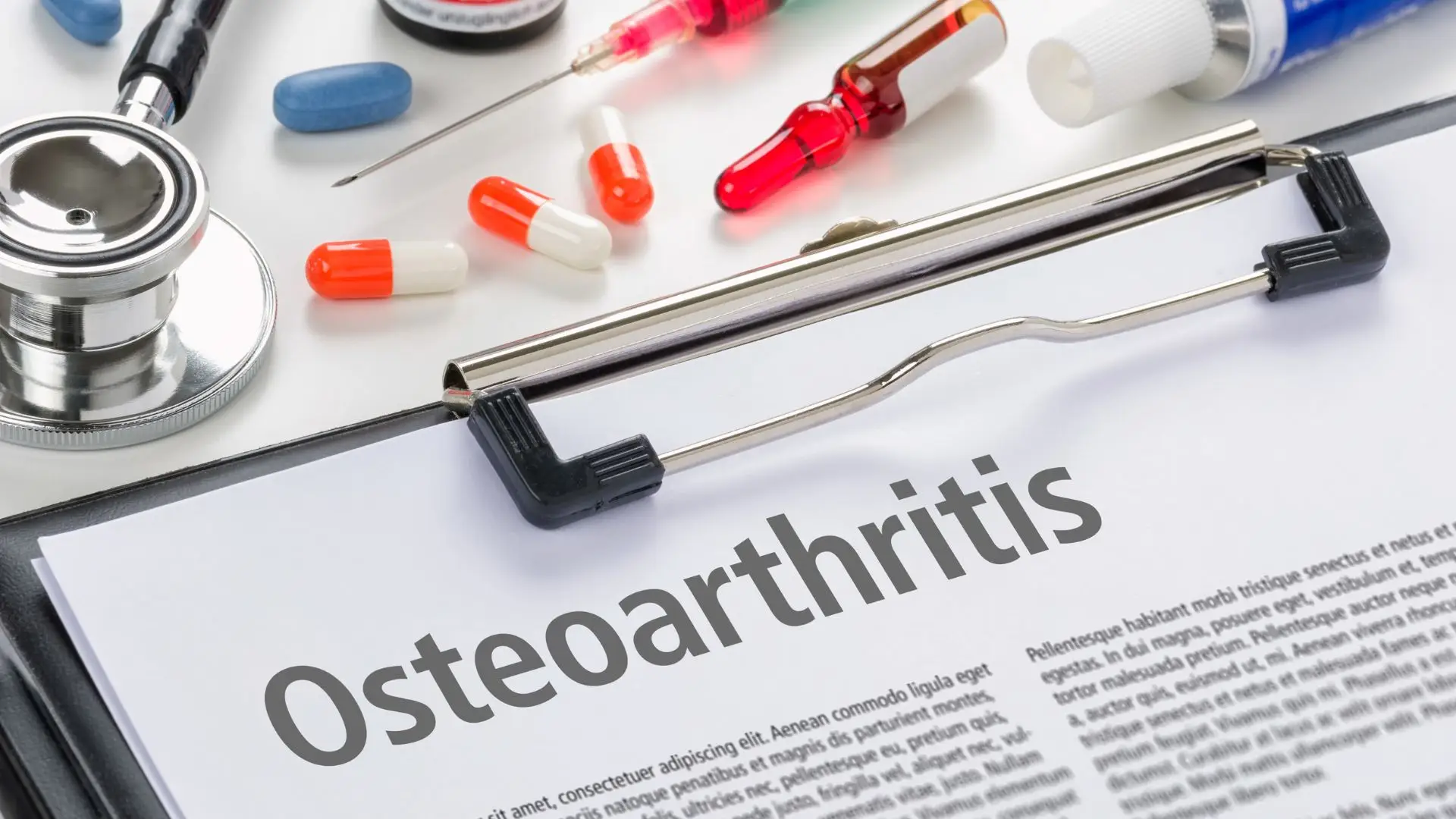

Living with Chronic Pain and Osteoarthritis
Chronic pain can be a relentless adversary, affecting millions worldwide and taking many forms, profoundly impacting lives. One of the most prevalent and challenging conditions is chronic pain associated with osteoarthritis (OA). In this comprehensive guide, we aim to shed light on the world of chronic pain in osteoarthritis, addressing common questions and concerns.
We’ll explore whether osteoarthritis always causes pain, the potential for stomach discomfort, pain management strategies for both severe and chronic cases, treatment options, living a full life with this condition, and understanding the reasons behind the sometimes overwhelming pain. Let’s embark on a journey to find answers and solutions
Does Osteoarthritis Always Cause Pain?
Osteoarthritis (OA) is a degenerative joint disease that affects millions of people worldwide. It’s often associated with pain and discomfort, but does that mean everyone with OA experiences pain? Not necessarily.
Osteoarthritis is a highly variable condition, and pain doesn’t manifest uniformly among individuals. Several factors contribute to whether OA causes pain, including the stage of the disease, joint involvement, and an individual’s unique response to it.
At its core, OA is characterized by the breakdown of cartilage, the protective cushioning tissue in the joints. As OA progresses, this cartilage damage can lead to joint pain, stiffness, and reduced mobility. However, during the early stages, some people may not even be aware they have OA because they experience no noticeable pain.
Moreover, not all joints in the body are equally affected. While OA often occurs in weight-bearing joints like knees, hips, and spine, it can also impact fingers, wrists, and toes. Pain tends to be more common in the former group, while the latter may remain relatively pain-free.
A key aspect of OA is inflammation. When inflammation accompanies cartilage damage, it can amplify pain. However, not everyone with OA experiences inflammation, and its presence can fluctuate.
So, does OA always cause pain? The answer is no. It’s a highly variable condition, and individuals may experience different levels of pain or even be pain-free, especially in the early stages. That said, it’s essential to monitor your joint health, especially if you’re at risk for OA, as early intervention can help prevent or mitigate pain in the future. If you do experience pain or discomfort, consult a healthcare professional for a proper diagnosis and treatment plan tailored to your unique situation.
Can Osteoarthritis Cause Stomach Pain?
Osteoarthritis primarily affects the joints and is not directly responsible for causing stomach pain. However, there can be indirect connections between OA and stomach discomfort.
One potential link is the use of pain medications. Individuals with osteoarthritis may take nonsteroidal anti-inflammatory drugs (NSAIDs) or other pain relievers to manage their joint pain. Prolonged use of these medications can sometimes lead to gastrointestinal issues, including stomach pain. It’s essential to use these medications as prescribed and under the guidance of a healthcare professional to minimize any potential side effects.
Additionally, if OA-related pain and mobility issues lead to a sedentary lifestyle, this inactivity can indirectly contribute to digestive problems or discomfort. Staying physically active, within the boundaries set by your condition, can help maintain overall health and prevent such issues.
In summary, osteoarthritis itself does not cause stomach pain, but certain factors related to its treatment and management may indirectly lead to gastrointestinal discomfort. If you experience stomach issues while managing OA, it’s crucial to discuss them with your healthcare provider for appropriate guidance and adjustments to your treatment plan.

Pain Management For Severe Osteoarthritis
Managing chronic pain from osteoarthritis (OA) is an ongoing challenge for many individuals, but it’s not an insurmountable one. With the right strategies and support, it’s possible to lead a fulfilling life despite the condition.
-
Medications: For chronic OA pain, doctors often prescribe a combination of pain relievers and anti-inflammatory medications to manage discomfort. These can include NSAIDs, analgesics, or even disease-modifying drugs in some cases.
-
Physical Therapy: Consistent physical therapy is crucial for maintaining joint function and reducing pain. Physical therapists can work with patients to develop exercise regimens that strengthen the muscles around affected joints and improve flexibility.
-
Lifestyle Modifications: Lifestyle changes can play a vital role in managing chronic OA pain. Maintaining a healthy weight helps reduce the load on weight-bearing joints. Additionally, adopting joint-friendly habits, such as proper posture and ergonomic considerations, can make a significant difference in daily comfort.
-
Assistive Devices: When necessary, assistive devices like braces, canes, or orthopedic footwear can provide additional support and alleviate pain.
-
Injections: In the case of severe and chronic pain, your healthcare provider may recommend injections, such as corticosteroids or hyaluronic acid, to provide relief.
-
Surgical Options: In extreme cases, when conservative treatments are ineffective, joint replacement surgery may be considered to relieve chronic pain.
Chronic OA pain management is a multifaceted approach. It requires a partnership between patients and healthcare professionals to determine the most suitable combination of treatments. Regular monitoring, communication, and a commitment to a healthy lifestyle are essential to achieving long-term relief and improving the quality of life.
Can You Have Chronic Pain with Osteoarthritis?
Osteoarthritis (OA) is a complex and variable condition, and whether you experience chronic pain with OA can depend on several factors.
Chronic pain in OA is a common occurrence. As the condition progresses, the protective cartilage in joints breaks down, leading to pain, stiffness, and discomfort. In many cases, these symptoms become persistent, resulting in chronic pain. However, the severity and duration of pain can vary widely from person to person.
Various factors influence chronic pain in OA, including the location of affected joints and the stage of the disease. Weight-bearing joints like knees and hips are more prone to chronic pain, especially when OA reaches an advanced stage. In contrast, OA in the fingers or toes may cause milder or intermittent discomfort.
It’s important to note that while chronic pain is a frequent companion of OA, early diagnosis, proper management, and lifestyle adjustments can help mitigate its impact. If you’re experiencing chronic pain with OA, consult a healthcare professional who can create a personalized treatment plan to improve your quality of life and alleviate discomfort.
Can You Live A Long Life with Osteoarthritis?
The diagnosis of osteoarthritis (OA) may raise concerns about long-term quality of life, but the good news is that OA typically doesn’t significantly affect life expectancy. With proper management and lifestyle adjustments, individuals can live long, fulfilling lives despite the condition.
OA primarily impacts the joints, causing pain and reducing mobility. While it may cause discomfort, it rarely poses a direct threat to life. Instead, the focus should be on effectively managing the condition to ensure a good quality of life.
Living a long and healthy life with OA involves:
-
Effective Pain Management: Addressing pain through medication, physical therapy, and lifestyle changes is crucial to maintaining mobility and overall well-being.
-
Healthy Lifestyle: Maintaining a balanced diet, managing weight, staying physically active (within OA limitations), and avoiding excessive joint stress are vital.
-
Regular Monitoring: OA is a progressive condition. Regular check-ups with healthcare professionals help ensure that any necessary adjustments to treatment plans are made.
-
Mental and Emotional Well-being: Managing OA also includes addressing the emotional and mental aspects of living with chronic pain. Support groups and counseling can be beneficial.
In summary, living a long life with osteoarthritis is not only possible but probable. With the right strategies, OA’s impact on your daily life and overall longevity can be minimized.
Conclusion On Living with Chronic Pain and Osteoarthritis
In conclusion, our journey through the world of chronic pain from Osteoarthritis (OA) has shed light on critical aspects of this challenging condition. From understanding the variable nature of pain to dispelling misconceptions about stomach discomfort, we’ve explored how to manage chronic pain in severe OA and the strategies for long-term relief.
It’s clear that OA doesn’t always cause pain, and when it does, the severity can differ widely. Nonetheless, there is hope and help for those facing chronic OA pain. Through a combination of medications, physical therapy, lifestyle changes, and, when necessary, surgical interventions, pain can be managed effectively.
Furthermore, the ability to live a long and fulfilling life with OA is a real possibility. By prioritizing pain management, adopting a healthy lifestyle, regular monitoring, and addressing the emotional aspects of the condition, individuals can thrive despite OA’s challenges.
Remember, if you’re experiencing chronic pain from OA, you’re not alone, and help is available. Consult with a healthcare professional to create a personalized plan that will empower you to lead a vibrant and pain-managed life.